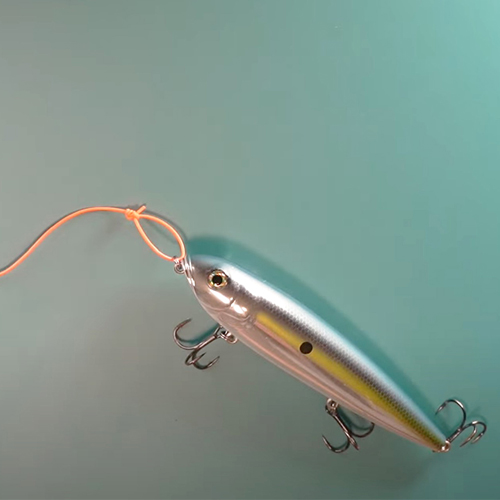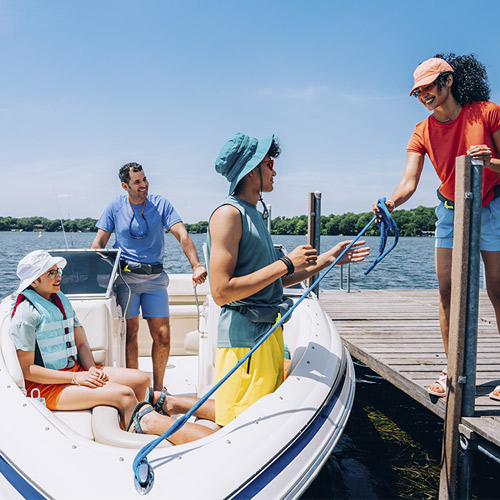Fly Fishing Rods
Fly fishing rods come in different materials, lengths and weight. Learn everything you need here in how to select the best fly rods, and get ready for your next fishing trip.
How To Select A Fly Fishing Rod
To begin fly fishing for bass, trout, panfish or saltwater fish, you need the right fly fishing gear, starting with a fly fishing rod, most of which are made of graphite, fiberglass or bamboo. While rods of inexpensive graphite or fiberglass may be the best fly fishing rods for beginners in the process of learning the sport, just remember, when it comes to fly rods, you get what you pay for. Quality and strength are especially important when shopping for the best fly fishing rods for use in saltwater. Unlike freshwater rods, saltwater fly fishing rods need to be able to muscle game fish that are faster, stronger and able to fight longer than their freshwater brethren. There are also new “all water rods” capable of being used for both freshwater and saltwater excursions.
More expensive fly rods provide better materials and workmanship, so the more you fly fish, the more you will come to appreciate the type of performance the best fly fishing rods can provide. Such high quality rods can make you a better caster and, in turn, a better angler, so choose wisely.
Selecting The Rod Length
The length of fly rod you choose is important. If you fly fish small, brush-lined streams, most often 6- to 8-foot fly rods may be the best fly fishing rods for your needs. On the other hand, if you fly fish big rivers where casting room is no problem, or saltwater environments, a 9-foot fly rod makes more sense. Longer fly fishing rods offer the advantage of easier line control.
Selecting The Rod Weight
In fly fishing, the line provides the weight to deliver the fly when you cast. The larger the fly, the more wind resistant and heavy it is, so larger (heavier) fly line is needed to deliver it. If going after trout or panfish, you will use relatively small flies, and the delicate presentation of the fly is often critical. In this case, a 5- or 6-weight fly rod is the usual choice of most beginners because it can cast small flies delicately and cast relatively large flies to distant targets.
For trout, most people use fly rods ranging from tiny 1-weights up to 8-weight. Bass fishermen will use mostly 6- to 10-weights for fishing large flies. Most folks start fly fishing for trout and panfish with a 5-weight. You can buy the lighter or heavier fly rods later as you become more specialized in your fly fishing.
Teaming Fly Rod And Fly Line
You want a "balanced outfit" – a fly fishing rod and fly line that are designed for each other. Fly rods are designed by manufacturers to cast a certain weight of fly line. For instance, a 6-weight rod works with a 6-weight line; a 4-weight outfit takes a 4-weight line, and so on. If you look at a fly rod, you'll find this information printed just above the cork grip.
Fly rod manufacturers code their rods in a variety of ways and places. Some fly rods give the rod length and the fly line for which it is matched on a butt cap located on the end of the rod. Other fly rods give the rod length and fly line weights for which the rod is balanced above the cork grip. Most beginners rod/reel/line outfits have the fly line and fly rod already matched.
How To Choose the Right Fly Line for You
Fly Rods: 2-Piece, 3-Piece, Or 4-Piece
Most new anglers begin with a 2-piece fly rod because they fly fish close to home. As you begin to travel to new fishing places, 4-piece travel rods may become more important to you (they can usually be hand-carried aboard an airplane).
While your casting and fishing skills are at a beginner level, a less-expensive fly fishing rod and reel may serve you well. As your skills mature, you'll start to improve your fly tackle with higher-performance fly reels and fly rods. Good fly fishing equipment is always a better value in the long run and will help you learn faster.
Buying tackle at a fly shop where you can talk to knowledgeable sales staff is the best approach. Fly shop salespeople can help put the outfit together and assist you in casting with it. A knowledgeable store clerk should help you with those important first purchases and help you determine what fly rod is the right one for you and where you will fish.
Always Check Your Gear
When you put your outfit together, take a few moments to make sure the rod is securely assembled and there are no cracks or dings that could weaken it. Check your line to be sure it is not cracked or cut. Make sure the fly reel spool is not bent and turns freely.
Visit our next section to learn more about Fly Fishing Reels.
How to Set Up a Fly Fishing Rod
KEEP LEARNING

How to Tie the Non-Slip Loop Knot
The non-slip loop knot is a popular and reliable choice for securing hooks, lures, and other tackle to your fishing line.
LEARN MORE

Socials
Take me fishing social media links
LEARN MORE

TakeMeFishing x Teen Vogue
Join us on a creative journey as fashion designer Ahmrii Johnson walks us through her collaborative vision and process with Teen Vogue and fashion brand, Rentrayage, to create a special piece.
LEARN MORE


.png?lang=en-US&ext=.png)